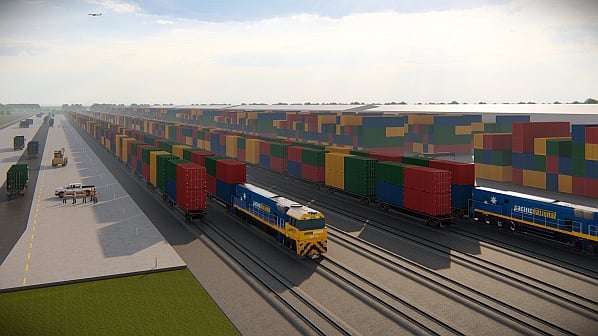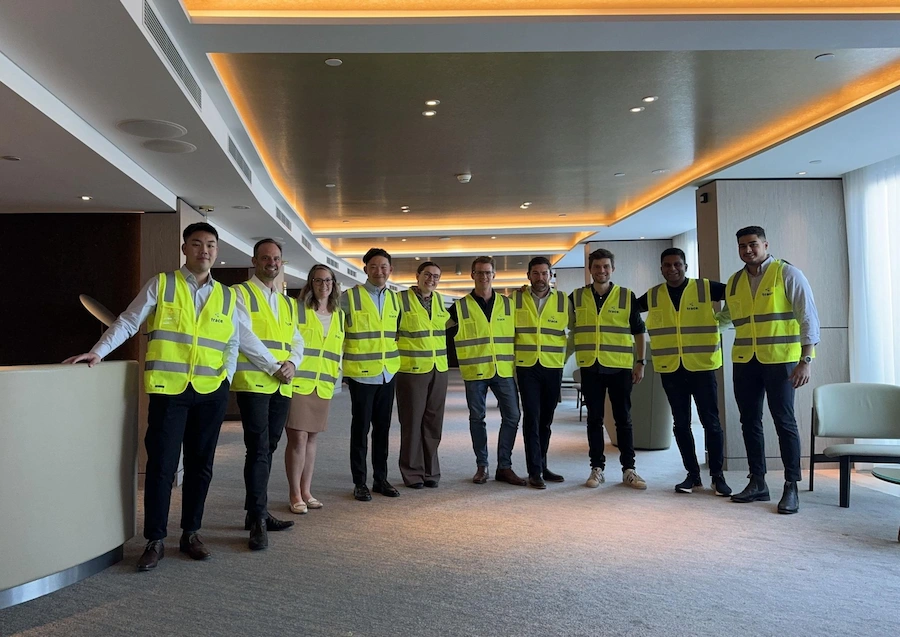How Universities and Schools Can Reduce Costs by Going to Market for New PPM Contracts
Why this matters now
Across Australia and New Zealand, education providers face a perfect storm: rising utility and labour costs, aging building stock, heavy compliance obligations, and heightened expectations for sustainability and student safety. Property Services—waste, vertical transport (lifts and escalators), mechanical/HVAC, electrical, plumbing, fire & life safety, and general contracting—sit right in the middle of the cost and risk profile.
Many institutions are still operating on legacy contracts signed years ago, often extended multiple times, with schedules and rates that no longer reflect actual demand, modern technologies, or today’s market pricing. A structured go-to-market (GTM) for Planned Preventative Maintenance (PPM) is one of the quickest, cleanest ways to reset costs, lift compliance, and reduce risk—while preserving the on-campus experience.
This article is a practical, copy-and-paste-friendly playbook you can use to plan and run a competitive procurement process. No hype, no jargon—just the steps that work in ANZ education environments.
The outcomes you’re aiming for
Before diving into tender packs and pricing schedules, get crystal clear on the five outcomes that matter:
- Lowest total cost of ownership (TCO)
Not just cheaper rates—fewer call-outs, less downtime, optimal replacement cycles, and energy-efficient operation. - Assured compliance and safety
Meeting Australian and New Zealand Standards, Building Codes, WHS legislation, and fire/life safety rules—without administrative drag. - Performance you can see and measure
Defined SLAs, uptime guarantees for lifts and critical HVAC, transparent reporting, auditable evidence, and clear abatement mechanisms. - Future-ready operations
CMMS/BMS integration, data-rich asset registers, smart sensors where they create value, and sustainable practices aligned to institutional targets. - Minimal disruption to teaching and student life
Planned works aligned to term dates, exams, events, and public access.
The business case in plain numbers
A well-run PPM tender often finds savings in three places:
- Unit rate optimisation: Competitive market pricing for standard tasks and parts.
- Scope rationalisation: Removing duplicate tasks, mis-timed frequencies, or activities that don’t materially reduce risk.
- Operating model improvements: Consolidating vendors, aligning service windows to demand, tightening escalation paths, and using data to prevent failures.
Beyond direct cost savings, the real prize is avoided cost: fewer breakdowns, faster recovery, less overtime labour, and lower energy usage from well-tuned plant and equipment.
What good looks like: the PPM procurement blueprint
Think of the process in six stages. Each stage has a clear deliverable and a go/no-go decision.
1) Mobilise and baseline
- Set the mandate: Confirm the contract list in scope (waste, VT, mechanical/HVAC, electrical, plumbing, fire/life safety, general contracting) and the campuses, precincts, or satellite sites included.
- Form the squad: Property/Facilities, Procurement, Finance, WHS/Compliance, Sustainability, IT/Systems (for CMMS/BMS), and key academic stakeholders.
- Baseline the current state: Gather contracts, rate cards, SOWs, performance reports, service history, abatement logs, and ad-hoc variation records.
- Define success metrics: TCO reduction target, compliance KPIs, uptime requirements, energy intensity goals, and service experience measures.
Watch-outs: Don’t let the process be data-blocked. If your asset data is messy (it usually is), plan a quick-and-clean uplift—not perfection—before market.
2) Fix your data (enough to move)
- Asset register uplift: For lifts, HVAC, switchboards, pumps, fire equipment, etc., capture make/model, age, criticality, and last major service.
- Condition and criticality tagging: Not everything needs the same frequency. Tag assets by student safety impact, teaching criticality, and compliance requirement.
- Demand profile: Overlay term dates, events, lab schedules, and holiday shutdown periods to rationalise service windows.
- Systems integration mapping: Confirm how vendors will read/write to your CMMS (e.g., Maximo, Archibus, SAP, TechnologyOne) and relevant BMS.
Rule of thumb: “Right enough” data is the goal—accurate asset lists, frequencies tied to standards and risk, and a clean service history for the last 12–24 months.
3) Decide your sourcing strategy
- Single integrated FM vs multi-category: Universities often benefit from category bundles (e.g., MEP + Fire) where synergies exist, but lifts and waste can remain separate due to specialisation and OEM constraints.
- Campus vs portfolio contracts: ANZ institutions with multiple campuses can consolidate to unlock buying power, while keeping local responsiveness in the SLA structure.
- Term and options: Typical PPM terms are 3+2 or 5+2 years. Align options to capex milestones and planned refurbishments.
- Performance and risk: Choose between prescriptive SOWs (exact tasks and frequencies) and outcome-based models (availability, compliance, and energy performance)—or blend them.
Tip: Keep incumbents honest by designing a process where service quality and continuous improvement matter as much as price.
4) Build the market pack properly
Your RFT pack should be simple to navigate and impossible to misinterpret:
- Instructions to tenderers: Timelines, site walks, questions protocol, addenda, and commercial terms.
- Scope of services by category:
- Waste: Streams (general, recyclables, organics, clinical/lab, e-waste), expected volumes, on-site compaction, Container Deposit Scheme where applicable, contamination thresholds, and reporting.
- Vertical Transport: Asset list with serial numbers, uptime targets per asset, response/rectification times, entrapment procedures, incident reporting, and after-hours cover.
- Mechanical/HVAC: Compliance to standards, maintenance task lists by equipment type, performance tuning, filtration standards, seasonal changeover, and energy optimisation.
- Electrical: Switchboard inspections, RCD testing, thermographic scans, emergency/exit lighting, generator/UPS testing, and statutory reporting.
- Plumbing: Backflow prevention, thermostatic mixing valves, water quality testing (including Legionella management), pumps and tanks, and emergency response.
- Fire & Life Safety: EWIS, sprinklers, hydrants/hose reels, extinguishers, passive fire systems, smoke management, evacuation drills, and mandatory certification cadence.
- General Contracting: Minor works, patching/painting, small carpentry, flooring, glazing, and 24/7 make-safe protocols.
- Asset registers and drawings: “Read-only” canonical lists with IDs that match your CMMS.
- Service level regime: Response and rectification times, uptime targets for critical assets, and a clear escalation pathway.
- Performance and abatement: KPI scorecards, evidence requirements, and a fair abatement structure that rewards improvement and penalises persistent under-performance.
- Sustainability and social procurement: Recycling and circularity targets, waste diversion, Indigenous procurement commitments, modern slavery due diligence, local jobs and apprenticeships, and carbon reporting requirements.
- Safety and compliance: WHS documentation, permits to work, contractor inductions, working with children checks where applicable, and emergency procedures.
- Systems and data: API specs or data templates for CMMS/BMS integration, data ownership clauses, and cyber expectations for vendor connections.
5) Price it the right way
A pricing schedule that’s poorly structured is the fastest path to “apples and oranges” comparisons and hidden cost creep. Get these elements right:
- Fixed PPM: Annual fixed price for defined tasks and frequencies per asset (with inclusions/exclusions clearly marked).
- Reactive call-outs: Hourly rates by trade/qualification, min charges, after-hours multipliers, and call-out bands.
- Materials and parts: Discount structures vs list, preferred brands, OEM vs equivalent policies, and warranty handling.
- Quoted works: Mark-up caps, competitive quoting rules above thresholds, and a transparent variation process.
- Indexation: Define the index (e.g., CPI, Labour Price Index) and timing. Avoid compounding surprises by setting guardrails.
- Incentives: Share-in-savings or performance bonuses tied to energy reductions, uptime improvements, or waste diversion milestones—only where measurement is robust.
Pro tip: For lifts and fire/life safety, pay close attention to OEM proprietary parts and software. Design pricing schedules that limit monopolistic behaviour while preserving safety.
6) Run a fair, competitive process
- RFI/EOI (optional): Pulse the market for capability and shortlist if the field is large.
- RFT: Issue clear packs, hold site walks, and require Q&A through a formal channel.
- Scoring: Use weighted criteria covering price, methodology, compliance, capability, sustainability, and digital integration.
- BAFO/Negotiation: Invite clarifications, test alternative pricing structures, and tighten contract terms.
- Reference and safety checks: Validate safety performance, statutory compliance track record, and campus-like experience.
- Award and standstill: Communicate outcomes professionally and prepare transition plans immediately.
Category-by-category tactics to lower cost without lowering standards
Waste services
- Right-size your streams: Measure actual generation by building type (labs vs general teaching) and adjust bin sizes/frequencies.
- Tackle contamination at source: Clear signage, student ambassadors during peak periods, and vendor education cut landfill costs.
- Plan logistics: Consider BOH constraints, collection windows that avoid student congestion, and container deposit schemes where available.
- Data you need: Weights by stream, contamination rates, and exception logs. Use it to reset pricing annually.
Vertical transport (lifts/escalators)
- Uptime is everything: Tie PPM schedules to availability targets per asset, with response and rectification SLAs clearly defined.
- Independent lift consultancy (where needed): Use for scope validation, OEM neutrality, and major refurb planning.
- Event overlay: Exams, graduations, and open days drive load—align manning and standby accordingly.
- Spare parts & software: Clarify access, versions, and update rights to prevent lock-in.
Mechanical/HVAC
- Energy is the lever: Optimise BMS set-points, filters, and preventative tasks. Demand-controlled ventilation and season-appropriate schedules often yield quick wins.
- Indoor air quality (IAQ): Education spaces need healthy CO₂ and particulate levels; define the monitoring standard.
- Chilled/hot water plant: Condition-based tasks (e.g., vibration analysis) can reduce breakdowns and overtime.
Electrical
- Prioritise risk: RCD and thermography programs catch issues early. Align testing windows to low-occupancy periods.
- Emergency lighting: Move to LED and define failure thresholds to minimise call-outs.
- Generator/UPS: Include load testing schedules that won’t disrupt labs or data centres.
Plumbing
- Compliance first: Backflow and TMV testing regimes must be watertight (pun intended).
- Water efficiency: Leak detection and smart metering often pay back quickly, especially across large campuses.
- Legionella management: Define roles across HVAC and plumbing to avoid gaps.
Fire & life safety
- No grey areas: Clear delineation between active and passive systems, testing frequencies, and defect rectification timeframes.
- Evacuation and training: Tie vendor responsibilities to drill schedules and documentation, especially for residential colleges.
- Evidence pack: Certificates, logs, and photos stored against asset IDs in your CMMS.
General contracting (minor works)
- Make-safe first: Define a 24/7 make-safe protocol with caps and an approval ladder for follow-on works.
- Small works panel: For jobs above a threshold, use a mini-competition among pre-approved contractors to keep pricing sharp.
- Student-safe sites: Clear requirements for hoardings, traffic, and hours to minimise disruption.
Compliance and risk—done once, done right
ANZ campuses carry a unique mix of public access, heritage buildings, laboratories, and residential facilities. Your contract and governance pack should address:
- Statutory compliance matrix: Map each category to relevant Australian/New Zealand Standards and testing frequencies.
- WHS and child-safe obligations: Contractor inductions, worker clearances where required, and incident reporting templates.
- Insurance and financial surety: Appropriate coverage, performance bonds where proportionate, and rapid rectification provisions.
- Modern slavery and supplier ethics: Practical due diligence questionnaires, escalation steps, and audit rights.
- Cyber and data: If vendors connect to your systems (CMMS/BMS), set minimal security baselines and data ownership rules.
Contracts that actually work on campus
Choose a contract form familiar to the local market (many institutions use standard ANZ forms with schedules tailored to services). Focus on:
- Clarity on inclusions/exclusions: Especially for lift OEM parts, fire rectifications, and after-hours works.
- Performance regime: KPIs, evidence, abatements, improvement plans, and a fair dispute pathway.
- Change control: Simple mechanisms for adding/removing assets, frequency changes, and new buildings.
- Indexation and benchmarking: Annual resets against agreed indices with optional third-party benchmarking at mid-term.
- Continuous improvement: A formal process for proposing and approving savings and sustainability initiatives.
Transition and mobilisation—where tenders succeed or fail
Plan your mobilisation like a mini-project:
- 90-day plan: Contractor onboarding, inductions, system access, asset verification, and PPM schedule upload to CMMS.
- Site protocols: Keys and access, hot works, confined spaces, permits, and emergency call-out rosters.
- Communications: Campus-friendly notices for noisy works, lift shutdowns, and system tests.
- Safety first: Toolbox talks, SWMS reviews, and joint risk walks.
- Evidence check: First month’s certificates and logs to validate processes work end-to-end.
- Early wins: Energy tuning, bin right-sizing, and backlog triage to build momentum.
Governance and reporting that people actually read
- Monthly ops packs: KPI scoreboard, compliance certificates, top risks, and completed/overdue PPM tasks.
- Quarterly performance reviews: Trend analysis, energy/waste results, improvement pipeline, and upcoming risks.
- Campus voice: Feedback from facility managers, student representatives, and residence managers.
- Audit-ready records: Everything tied to asset IDs in your CMMS—no emails as “systems of record”.
How to avoid the five classic mistakes
- Treating PPM as “set and forget.”
Build in continuous improvement and benchmarking. - Over-specifying tasks that don’t reduce risk.
Focus on statutory needs and criticality; shift to condition-based where justified. - Underweighting uptime and response times.
For lifts and HVAC, availability is the value driver—price it and measure it that way. - Letting data drift.
Make the vendor responsible for updating asset registers after every change, with QA checks. - Ignoring student and teaching calendars.
Lock your service windows around term dates and exams from the start.
A practical 12-week tender timeline (indicative)
- Weeks 1–2: Mobilise, confirm scope, form the squad, collect current contracts and performance data.
- Weeks 3–4: Asset register uplift, compliance matrix, and pricing structure design.
- Week 5: Issue RFT; run site walks.
- Weeks 6–7: Q&A and addenda; bidders refine technical and pricing proposals.
- Week 8: Receive bids; screen for completeness and commercial compliance.
- Week 9: Evaluate; clarifications; negotiate BAFO.
- Week 10: Recommendation, approvals, and intent to award.
- Weeks 11–12: Contracting and mobilisation planning.
(For multi-campus portfolios or complex lift portfolios, add time for independent technical reviews.)
Digital enablers that pay their way
- CMMS discipline: One asset list, one job history, one source of truth.
- BMS and IoT: Use where they help you predict issues or save energy; avoid gadgetry for its own sake.
- QR on assets: Field techs scan to log works and attach evidence—no back-office paper chase.
- Power BI/analytics: Visualise uptime, compliance, and spend by building and vendor to steer decisions.
Sustainability that actually saves money
- Waste: Reduce contamination, right-size collections, and divert organics where practicable.
- HVAC/Energy: Seasonal tuning, demand control, filter strategy, and metering/monitoring.
- Materials: Preference long-life, repairable components and transparent supply chains.
- Vendor incentives: Link part of the fee to measurable energy or diversion improvements—with clear baselines.
What success feels like on campus
- Fewer student complaints about hot/cold rooms or out-of-service lifts.
- Faster response to reactive issues, with better first-time-fix.
- Predictable monthly costs and fewer surprises.
- Compliance evidence at your fingertips when auditors knock.
- A facilities team that spends less time chasing vendors and more time improving the campus experience.
How Trace Consultants can help
Trace Consultants supports education providers across Australia and New Zealand to plan and execute property services procurements that stand up to scrutiny and deliver measurable results—without making big promises we can’t evidence. Typical support includes:
- Rapid current-state and data uplift: We clean and structure asset registers, map compliance requirements, and build pricing schedules that make comparisons straightforward.
- End-to-end GTM execution: From strategy and RFT pack development to evaluation, negotiation, contracting, and mobilisation planning—aligned to term dates and campus realities.
- Performance frameworks and governance: Clear KPIs, SLAs, abatement regimes, and reporting that connect cost, compliance, and student experience.
- Sustainability and social procurement: Practical targets for waste diversion, energy optimisation, local participation, and ethical supply chains.
If you’re planning a refresh of waste, lifts, mechanical/HVAC, electrical, plumbing, fire & life safety, or general contracting—and want a pragmatic ANZ-specific approach—Trace can partner with your property, procurement, and finance teams to deliver a clean, competitive outcome.
Your action checklist (keep it on your desk)
- Confirm your portfolio in scope and the outcomes that matter.
- Lift your asset register enough to make the tender real.
- Decide your bundling (what to consolidate and what to keep specialised).
- Build a pricing schedule that kills ambiguity.
- Lock in compliance, safety, and data requirements from the start.
- Align service windows to academic calendars.
- Govern with simple, visual reporting and firm abatement rules.
- Plan mobilisation like a project with a 90-day clock.
Final word
Going to market for PPM is not about squeezing vendors for one-off savings. It’s about resetting how the campus runs—safer, simpler, cheaper to own, and easier to manage. With a disciplined process and the right partner, universities and schools in Australia and New Zealand can lower total cost, improve compliance, and enhance the student and staff experience—all at once.
If you’d like a sounding board or a second pair of eyes on your pack, Trace Consultants can help you get there—quickly, transparently, and with a method you can reuse across your property services portfolio.



























